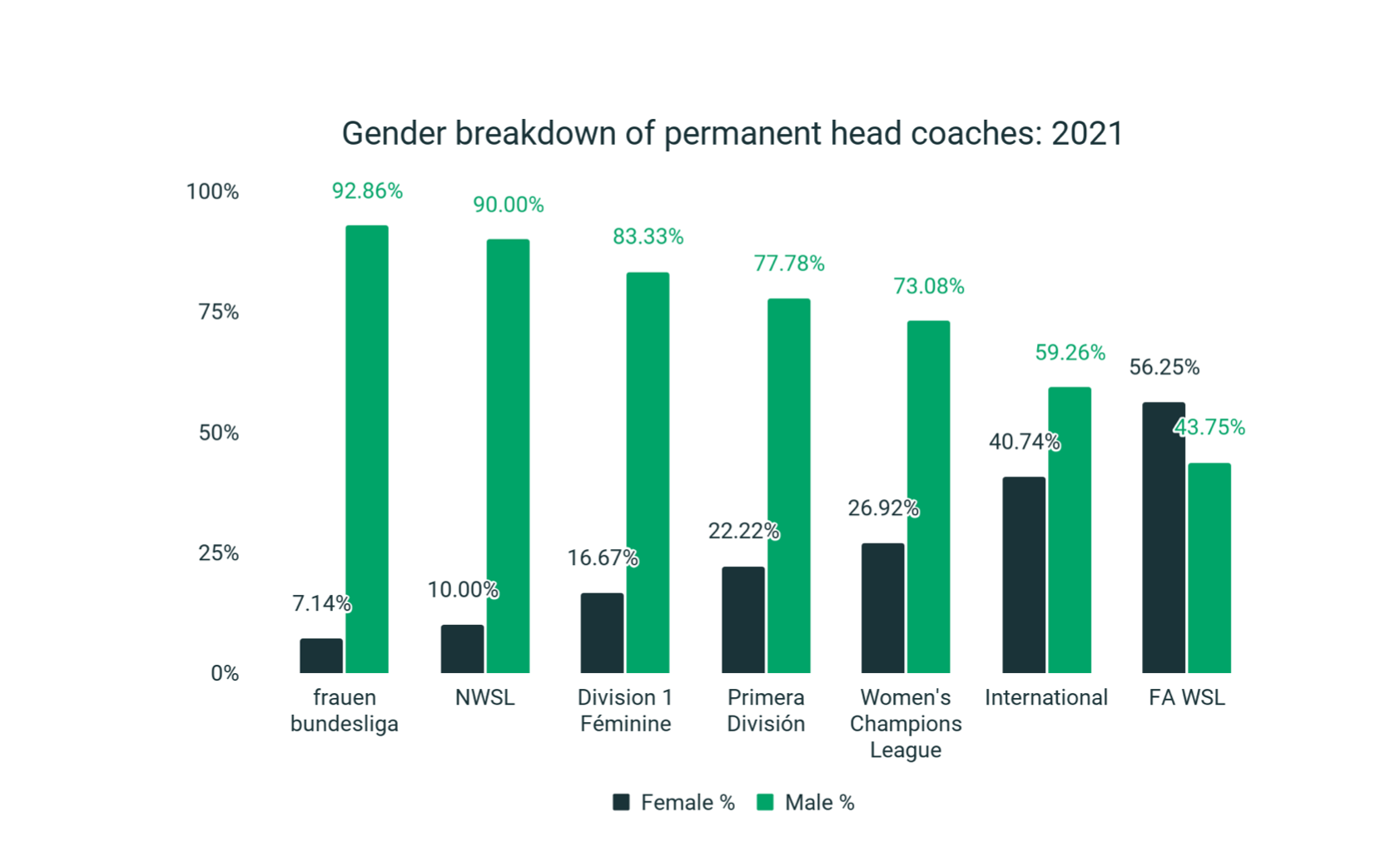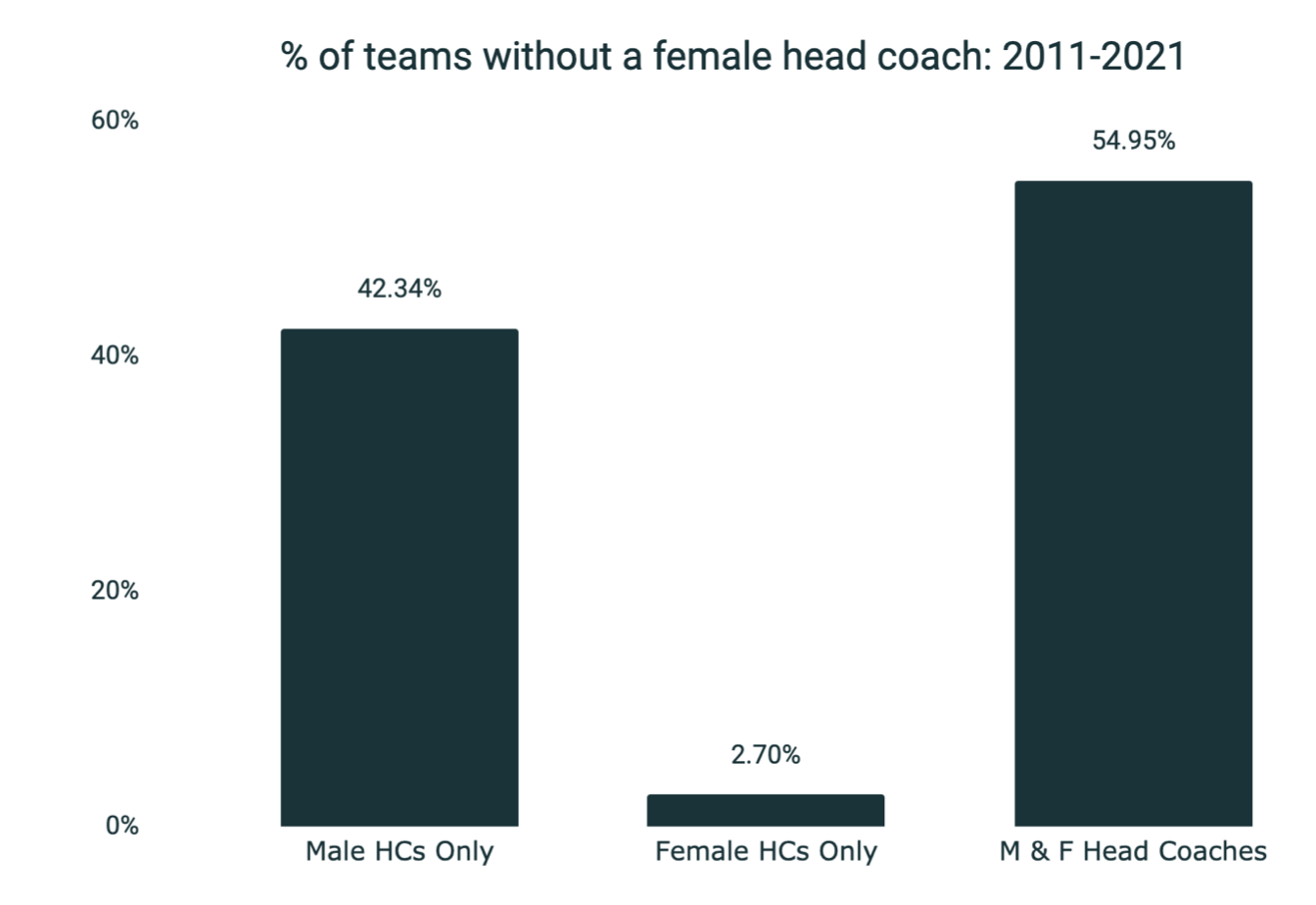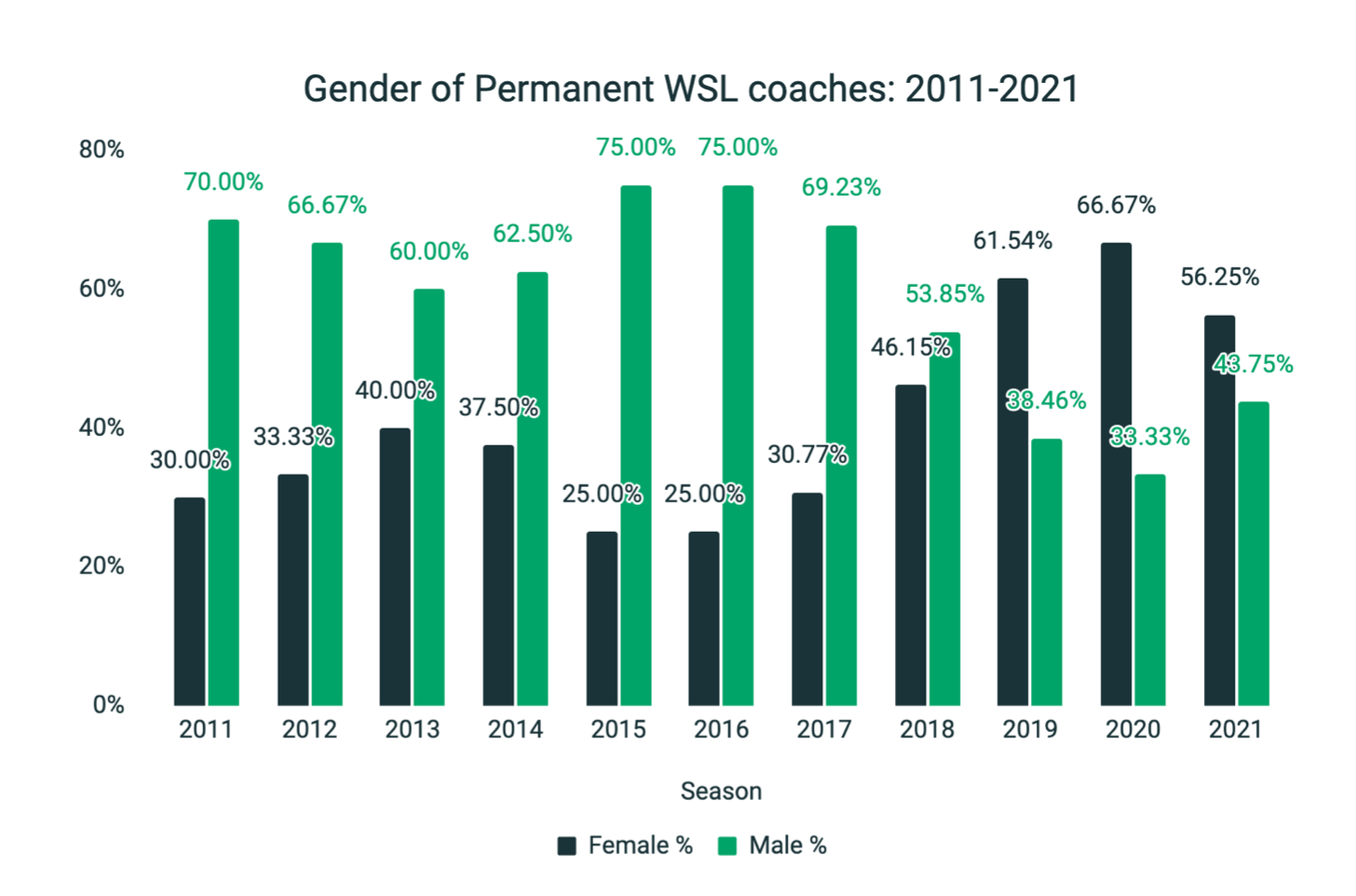This latest research has been undertaken by Danny McLoughlin of Run Repeat.
The report includes the teams that participated in the most recent season of the English FA WSL, Women’s Champions League, USA NWSL, German Frauen-Bundesliga, French Division 1 Feminine and Spanish Primera Division. It also included the top-25 ranked teams in The FIFA Women’s World Rankings.
Key findings:
- There are more female head coaches than ever before
- 72.06% of head coaches in women’s football are male
- Opportunities for female head coaches hard to come by in USA, and Europe
- Currently, less than 25% of head coaches are female in each of the NWSL, Frauen-Bundesliga, Division 1 Féminine, and Primera División Femenina de España
In England, the FA WSL is leading the way:
- 56.26% of permanent head coaches in 2021 have been female
- This has transformed from 25% female in 2015
Men Dominate Head Coach Positions in Women’s Football
In 2021, 72.06% (98 of 136) of the head coaches in women’s football have been filled by men. This has decreased since 2015 when 83.96% of head coaches were male but there are still more than 2 male coaches for every female head coach in women’s football.

England (in the FA Women’s Super League) is the only place where there have been more female than male head coaches in 2021. In the calendar year, there have been a total of 19 head coaches, 9 of which have been female.
There is a severe lack of opportunities for female head coaches in all other major leagues, excluding international football where 44% of national team head coaches are female.
In Germany, 1 of 14 head coaches has been female. In France, it’s 3 of 18 and in the USA it is 1 of 10 — although this will increase to 2/12 with Casey Stoney becoming the head coach of the San Diego soccer team
Teams with No Female Head Coaches in the Last 10 years
From the 111 clubs and national teams that have been analyzed in this research, there have been 320 unique head coaches identified. Of these, 251 (78.44%) were male and 69 (21.56%) were female.
Only 61 of the 111 teams have had both a male and a female head coach over the last 10 years. A further 3 teams have only had a female head coach for the last 10 years.

This leaves 47 clubs and international teams in the major US and European leagues plus the top 25 of the FIFA rankings that have not had a single female head coach at all in the past 10 years.
This either speaks to a lack of qualified female head coaches, or that decision-makers do not believe in female leadership, even in women’s football. Either way, there are systemic issues that need to be addressed to see more female head coaches in the game.
England Leads the Way
Despite a lack of opportunities elsewhere, the FA WSL in England is leading the way in promoting female head coaches. In 2021, 56.26% of the permanent head coaches in the league have been female.
However, things can change very quickly. Currently, the split has regressed back to 50% male 50% female. In 2020, two thirds of the league’s head coaches were female.

Looking back to 2016, when as many as 75% of head coaches in the Women’s Super League were male, the WSL looked a lot like the rest of women’s football.
The rest of women’s football can look to England as a place to learn how to make sure more female coaches are encouraged to and qualified to become head coaches.
Conclusion
In a world where women are almost completely excluded from the men’s game, it doesn’t seem fair that men dominate such an important positions in women’s football.
The FA WSL shows that it doesn’t have to be that way.
For women’s football to continue to grow, it’s important to have women in key management positions – both in the boardroom and the dugout.
This data shows there is still a long way to go before women are given the respect they deserve, even in their own game.
Methodology
We collected and analyzed data on head coaches from the English FA WSL, Women’s Champions League, USA NWSL, German Frauen-Bundesliga, French Division 1 Feminine, Spanish Primera Division and the top-25 ranked teams in The FIFA Women’s World Rankings from 2011-2021.
Only permanent head coaches were included in the analysis over time. Interim head coaches were excluded.
Where there are multiple head coaches for a team in a single calendar year, all coaches are included. This results in some years and leagues having more head coaches than teams in the league.
As league seasons do not all match up, we have done the analysis based on calendar year (e.g. 2020), rather than season (e.g. 2019/20.)
Data was collected from multiple sources. Where data was unavailable and clubs did not respond to requests for information, those clubs or missing years for those clubs were excluded from the results.